Monk of Cam Mountain is being followed
According to French investigation documents, Mr. Bay Do came to Cam Mountain around 1904 and started building the pagoda with the money inherited from his father's property, about 900 dong at that time, along with the money saved from his medical career. Bay Do affirmed that there were no donations, unlike other pagodas. This was a private project, belonging to him personally, but the value was 20 times higher than the cost that Bay Do revealed.
The authorities at that time questioned why Mr. Bay Do was almost never present at the temple. They said it was rare for a hermit living in solitude to have so many movements, make so many trips and have so many complicated relationships. But when questioned, he denied everything. He only admitted when the testimony of witnesses, fellow believers and his children matched each other. When arrested on March 17, 1917 and immediately interrogated, Bay Do said he did not participate in any secret societies, nor did he propagate anti-French propaganda. He lived in seclusion and did not meet anyone.
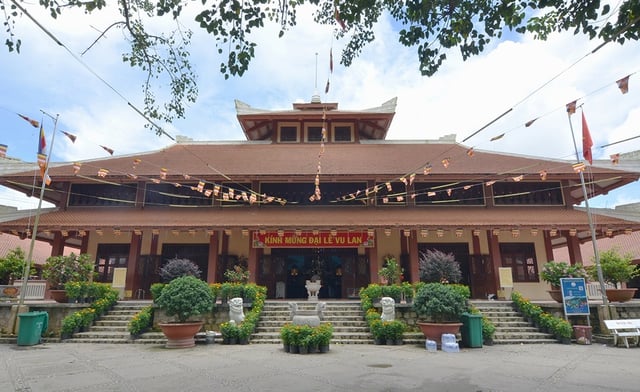
Big Buddha Temple
PHOTO: HOANG PHUONG
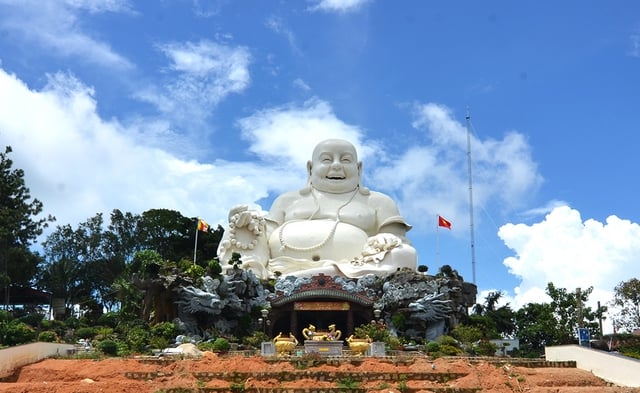
Maitreya Buddha statue in front of Big Buddha Temple
PHOTO: HOANG PHUONG
Explaining his presence in Chau Doc, where he was arrested, he said: "Leaving the mountain, I went to Cai Tuan Nui's house. I stayed there for 10 days, and then walked down and back up to Cam Mountain for 5 days." But Cai Tuan Nui testified: "He came to my house on the evening of March 17 to have dinner. He told me that he had returned from Can Tho and had just bought rice there." From this statement, the colonial government concluded that Mr. Bay Do was lying, because during the 15 days he left the mountain, he was not present in Chau Doc.
Finally, Mr. Bay Do admitted that he had gone to Can Tho to get 20 bushels of rice that he had asked Mr. Vo Van Cu's family to mill for him. Immediately after that, the secret police searched Mr. Cu's house and found on the ancestral altar a plate containing a stack of yellow and white amulets that Mr. Cu said were used by Bay Do to cure diseases. At this time, the French colonialists closely monitored Bay Do's activities, so the indictment confirmed that he had been to Long Xuyen, Ben Tre , My Tho, and Cho Lon. They confirmed that he had stayed in My Tho for a long time, from December 1915 to January 1916 before going to Saigon, Cho Lon, coinciding with the time of the riot at Saigon Prison on February 14, 1916.
Although he admitted to going out at that time, Mr. Bay Do said he only stayed in Saigon for one night at an acquaintance's house to buy potatoes and mushrooms, and also went to Cho Lon to buy items that he could not find in Saigon. But the indictment still concluded: "His trip around Tet was not accidental. It was in Cho Lon, where the rebellion movement began in 1913, that he prepared for the 1916 uprising."
Ma Vang is also Bay Do?!
The indictment published similar testimonies of several witnesses that there was a very powerful and clever monk named Ma Vang, who had a talisman with the words Buu Son Ky Huong, living in Ong Cam Mountain, who came to Ba Ket Hill to distribute talismans to the people. And they concluded that Bay Do, the monk of Cam Mountain, who distributed talismans with the words Buu Son Ky Huong and signed Ma Vang, was Cao Van Long, also known as Bay Do. They also explained: Ma means horse and Vang means loneliness. Ma Vang signed the big talisman and the flag of Phan Xich Long during the riot at Saigon's Central Prison. He was the key to all the turmoil in Cochinchina in early 1916. Meanwhile, "Bay Do affirmed that he had never been named Ma Vang"!
Bay Do was born in 1855 in Ben Tre. He had 5 children, 4 girls and 1 boy. All of his children, grandchildren, and in-laws lived at Nam Cac Tu. The report of the Chau Doc province chief described the pagoda as being built on the top of Cam Mountain, at an altitude of over 700 meters, hidden in the dense forest. There was no trail leading there. Without a guide, it was difficult to find the way to the pagoda because it had to pass through many ravines. Fruit trees were planted around the pagoda. The mountains and forests here could provide enough vegetables, but rice could not be grown, so one had to go down the mountain to buy rice and then mill it to transport it up.
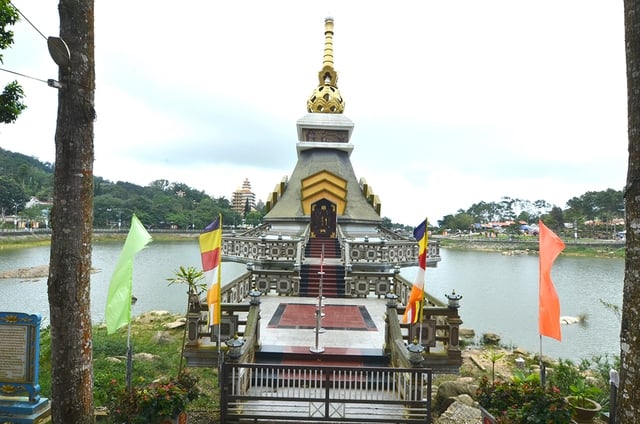
Thuy Liem Lake in front of Big Buddha Temple
PHOTO: HOANG PHUONG
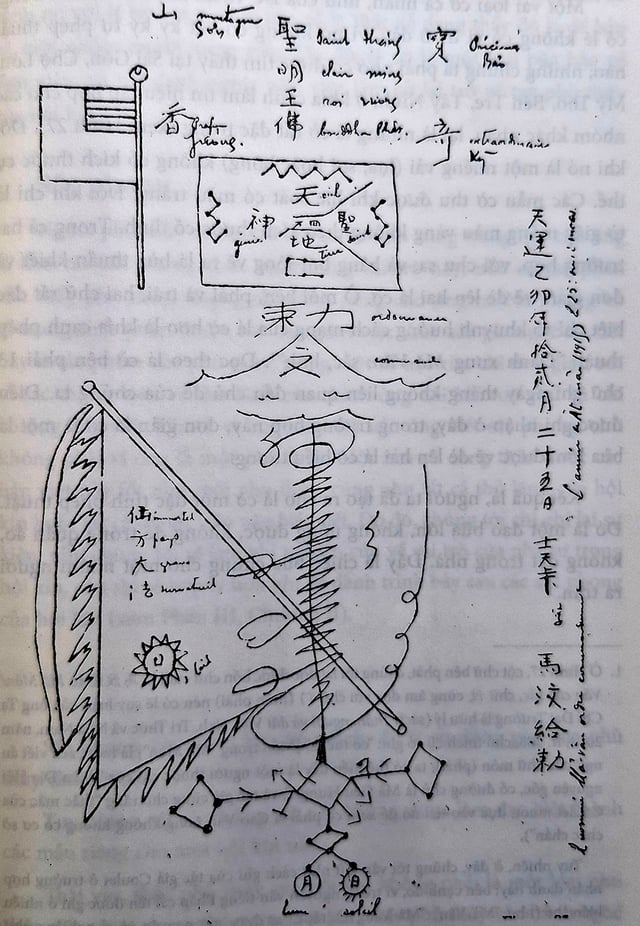
Phan Xich Long's uprising flag in 1916
PHOTO: DOCUMENTS BY HOANG PHUONG
Even a person who knows the way would have to spend 5 hours to get from the foot of the mountain to the temple. The thick canopy of leaves obscured the view. Large trees fell down as if to deliberately block the path of passersby. Guardhouses were placed here and there, allowing people climbing the mountain to be seen from afar. The temple was a large rectangular shape. The entrance was made of hard wooden panels, held in place by sturdy beams. Behind the main hall were very large horizontal buildings, surrounding an inner courtyard. In the middle were large wooden panels, capable of accommodating more than 500 people. On the right side were small rooms, each with a panel, on which were piles of scriptures. On the left side was the kitchen and poultry yard... But during the search, no cash was found in the temple.
The colonial government believed that with the support of two fellow believers, Nguyen Van Van and Nguyen Van Hien - two monks of Buu Son Pagoda and Phi Lai Pagoda, Mr. Bay Do had deceived the investigation. Mr. Van was said to be Bay Do's deputy, directing the movement in Chau Doc, while Mr. Hien was in charge in Ben Tre. Through the testimony and investigation results, they confirmed that Nam Cac Tu, namely Phat Lon Pagoda, was the base of the secret society whose members were mostly followers of Buu Son Ky Huong.
At that time, on the top of Cam Mountain, surrounding the Big Buddha Pagoda, was the living area of hermits. They abandoned the fertile lands where they were born, living in isolation on the arid area of Cam Mountain. But these eccentric hermits quickly left their hermitage and disappeared without a trace after the failed uprising in Saigon on February 14, 1916. (continued)
Source: https://thanhnien.vn/that-son-huyen-bi-nhan-vat-huyen-thoai-o-chua-phat-lon-185251007215621976.htm





![[Photo] National Assembly Chairman Tran Thanh Man receives First Vice Chairman of the Federation Council of the Federal Assembly of the Russian Federation](/_next/image?url=https%3A%2F%2Fvphoto.vietnam.vn%2Fthumb%2F1200x675%2Fvietnam%2Fresource%2FIMAGE%2F2025%2F12%2F02%2F1764648408509_ndo_br_bnd-8452-jpg.webp&w=3840&q=75)


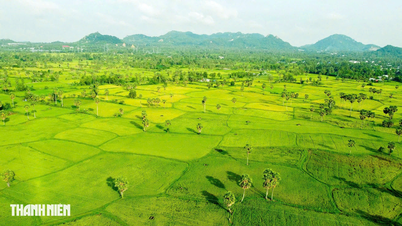
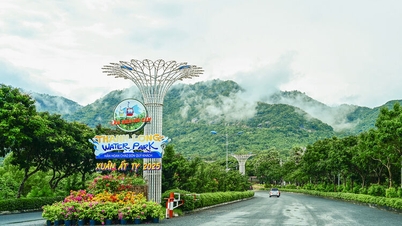

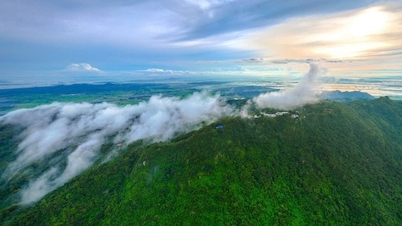

![[Infographics] The 30th Bay Nui Bull Racing Festival for the An Giang Television Cup](https://vphoto.vietnam.vn/thumb/402x226/vietnam/resource/IMAGE/2025/9/10/b6a3f19f8764496199fee96d228cc1b5)


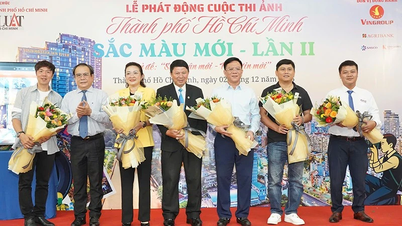

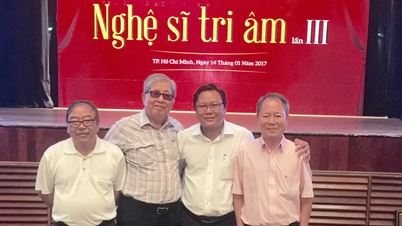


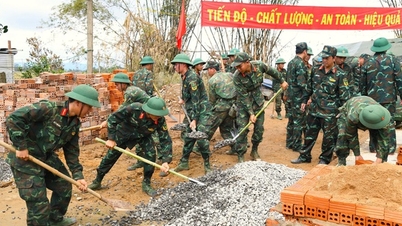








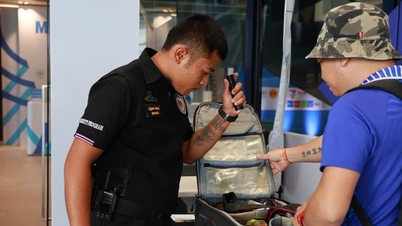

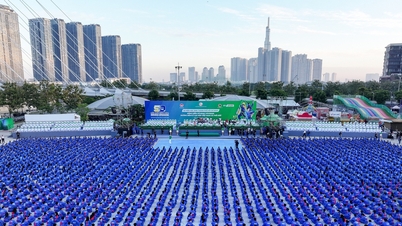

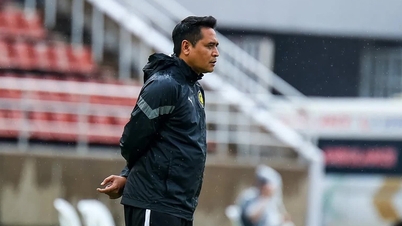
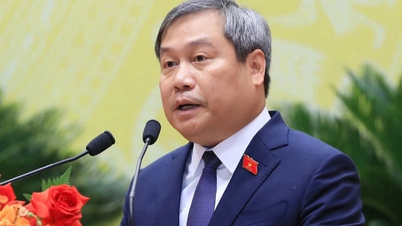
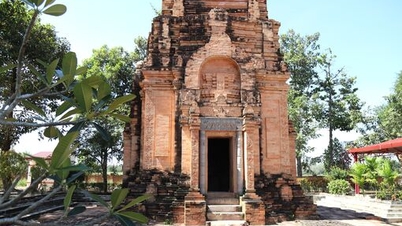

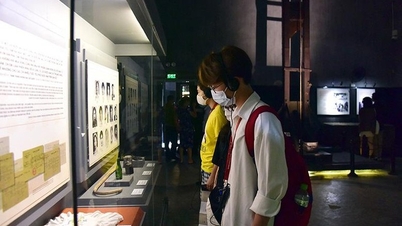

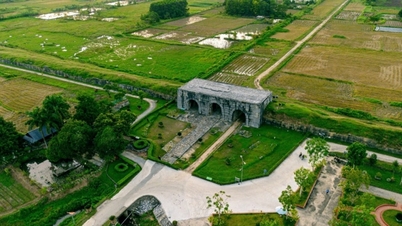

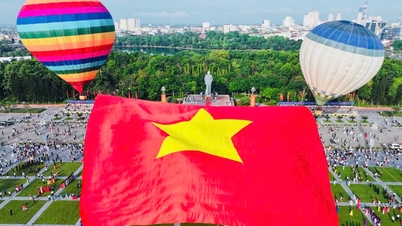

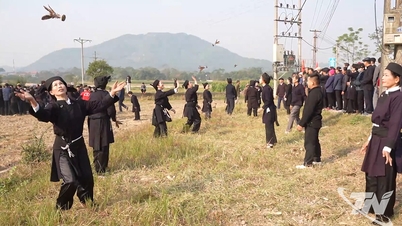






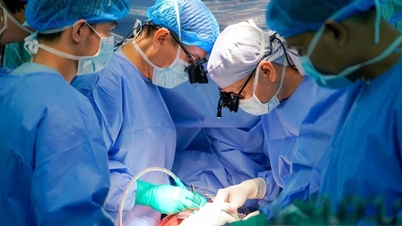

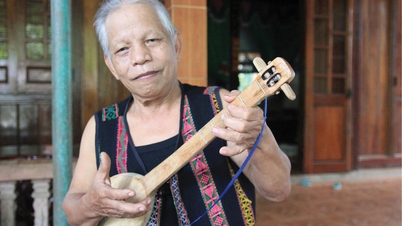

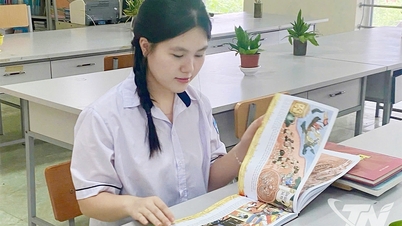
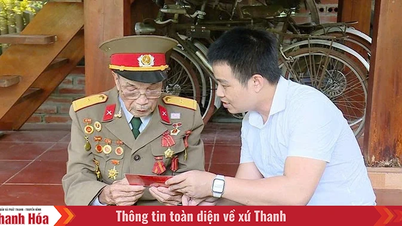









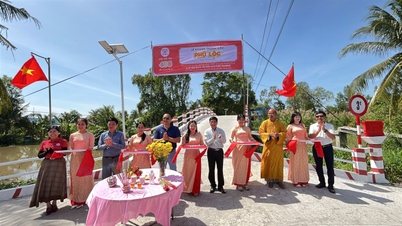









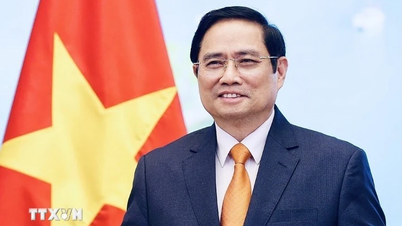


![[Photo] General Secretary To Lam and his wife attend the 50th Anniversary of Laos National Day](https://vphoto.vietnam.vn/thumb/402x226/vietnam/resource/IMAGE/2025/12/02/1764644139308_1.jpeg)
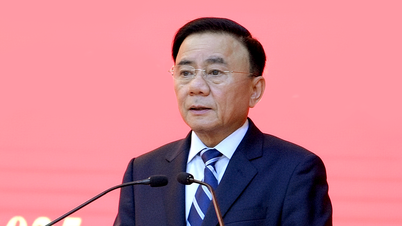
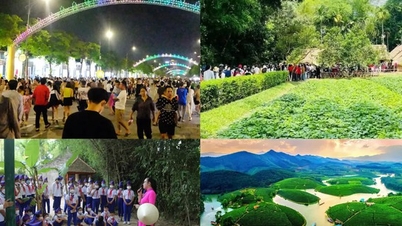


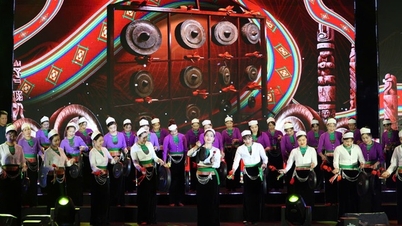


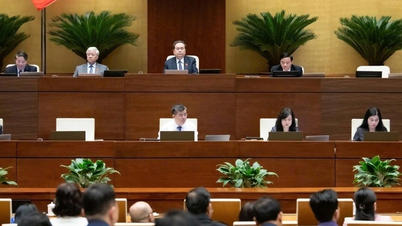

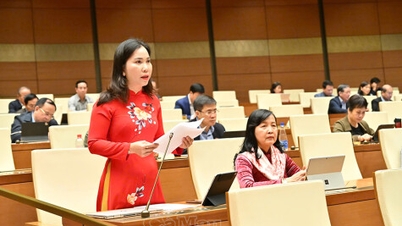

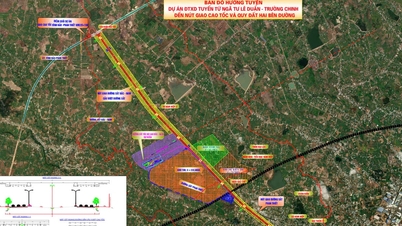


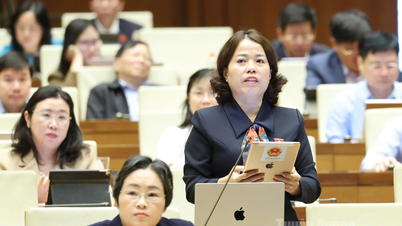

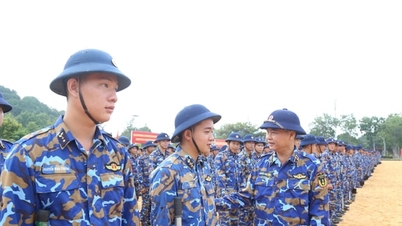










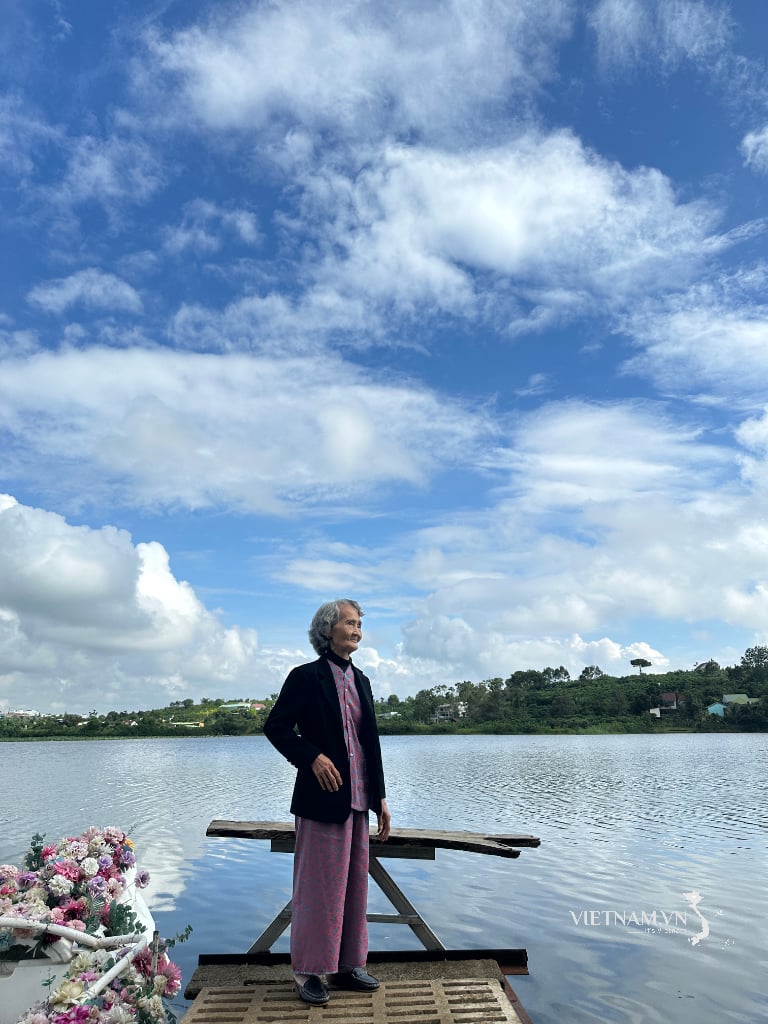


Comment (0)